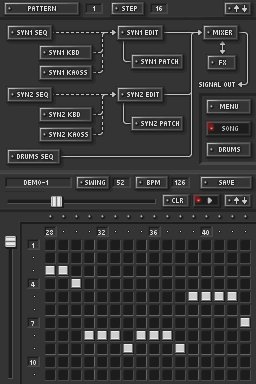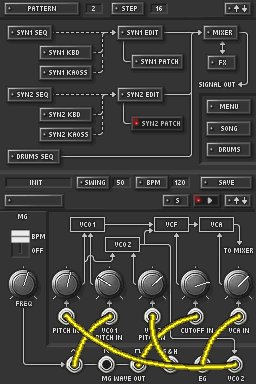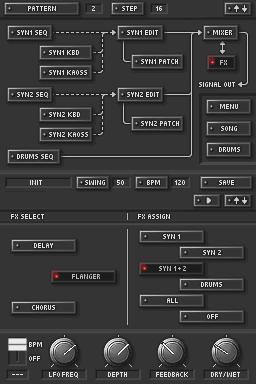GamesRadar+ Verdict
Pros
- +
Easy to navigate
- +
High-quality sound
- +
Good use of touchscreen
Cons
- -
Extremely plain visuals
- -
Not a game
- -
Fun depends on you
Why you can trust GamesRadar+
If you’re interested in making computer music, you’re going to have hours of fun with this little toy. It turns your DS into a software synth with a pattern sequencer and a couple of extras to add a bit of flourish to your recorded tunes or live performances. Without so much as a hint of gameyness about it, this is a bare-bones approach that focuses all the DS’s power towards wrangling some beefy noises out of its tiny speakers. Similar packages have been available on PCs, most notably Propellerhead’s vintage ReBirth, but this is simpler and much easier to use.

All six synth channels can be independently programmed to produce a wide range of sounds, although four are reserved as drum channels, which are controlled by a less flexible step sequencer than the two main synths. You could load one or more of the drum channels with something other than drum sounds, but realistically you should think of Korg DS-10 as a two-channel synth plus percussion.
The two main channels can be programmed by entering the notes into a pattern matrix. Patterns can have up to 16 steps, and you can only have 16 patterns in a song, which is a bit limiting. Alternatively, you can compose using the touch screen as a 2D control surface. This part is brilliant. By dragging or tapping with the stylus it’s possible to overdub notes, pan the volume between the speakers or automate several of the synth’s knobs. It makes us wish the DS had a MIDI output, and it’s great for riffing on top of a basic drum pattern.

Up to eight consoles can be linked and synchronized. Data can be uploaded from the master DS and edited on the others, which means you can create some very elaborate songs. Since each DS requires a cart for saving the data, it’ll wind up as expensive as a sophisticated PC package such as Reason, but performing an eight-person jam on a PC won’t get you as many hits on YouTube.
Nov 10, 2008
More info
| Genre | Other Games/Compilations |
| Description | As far from an actual game as one can get, this incredibly plain and unassuming synthesizer delivers some very deep musical possibilities, should you put in the time. |
| Platform | "DS" |
| US censor rating | "Everyone" |
| UK censor rating | "3+" |
| Release date | 1 January 1970 (US), 1 January 1970 (UK) |
Martin Kitts is a veteran of the video game journalism field, having worked his way up through the ranks at N64 magazine and into its iterations as NGC and NGamer. Martin has contributed to countless other publications over the years, including GamesRadar+, GamesMaster, and Official Xbox Magazine.



